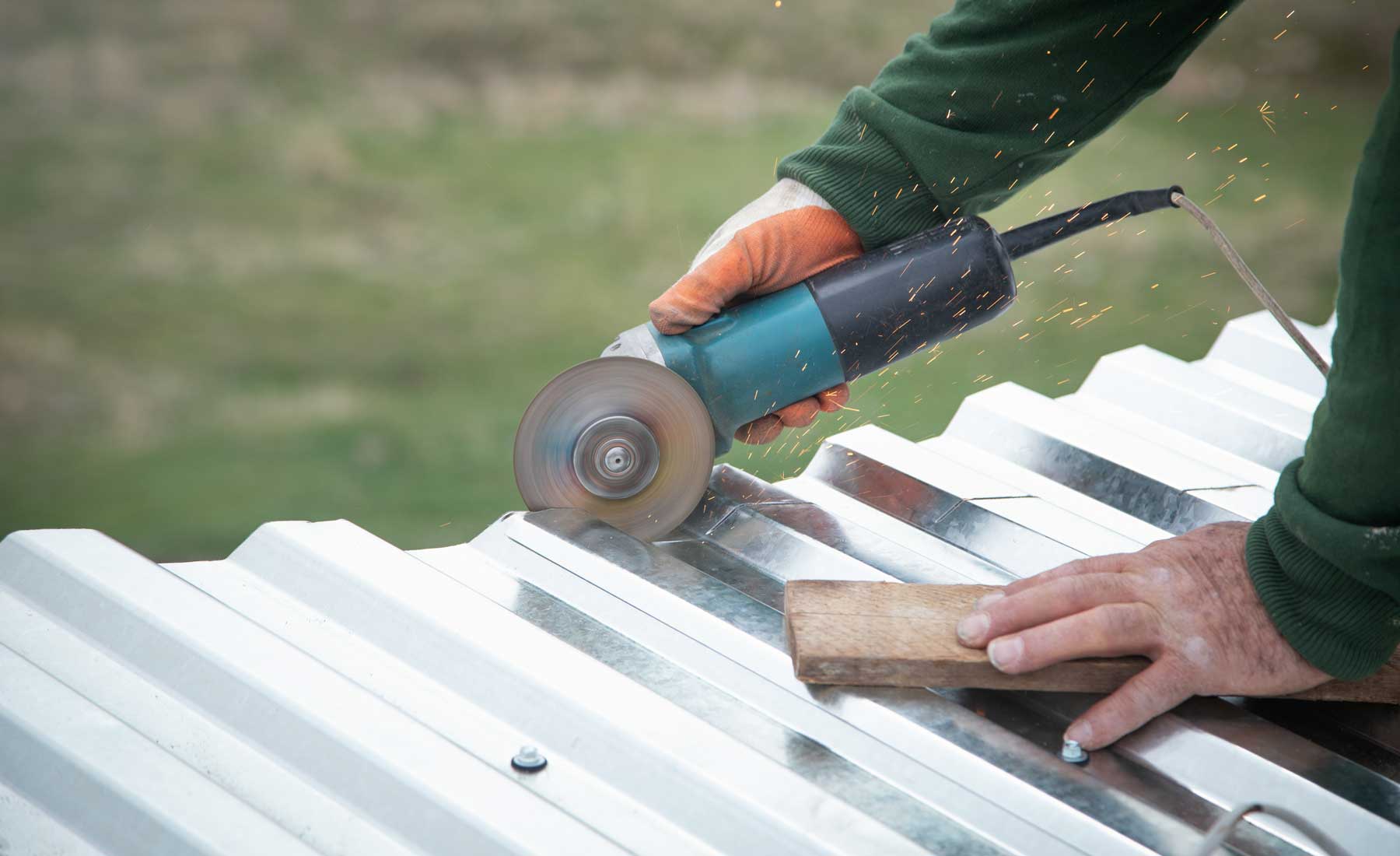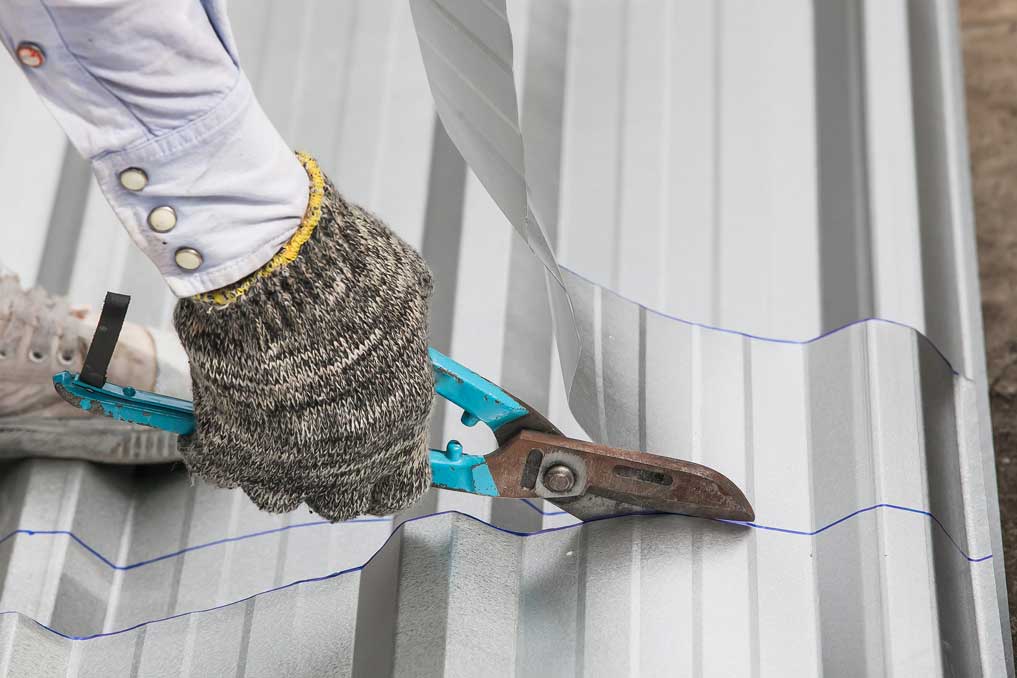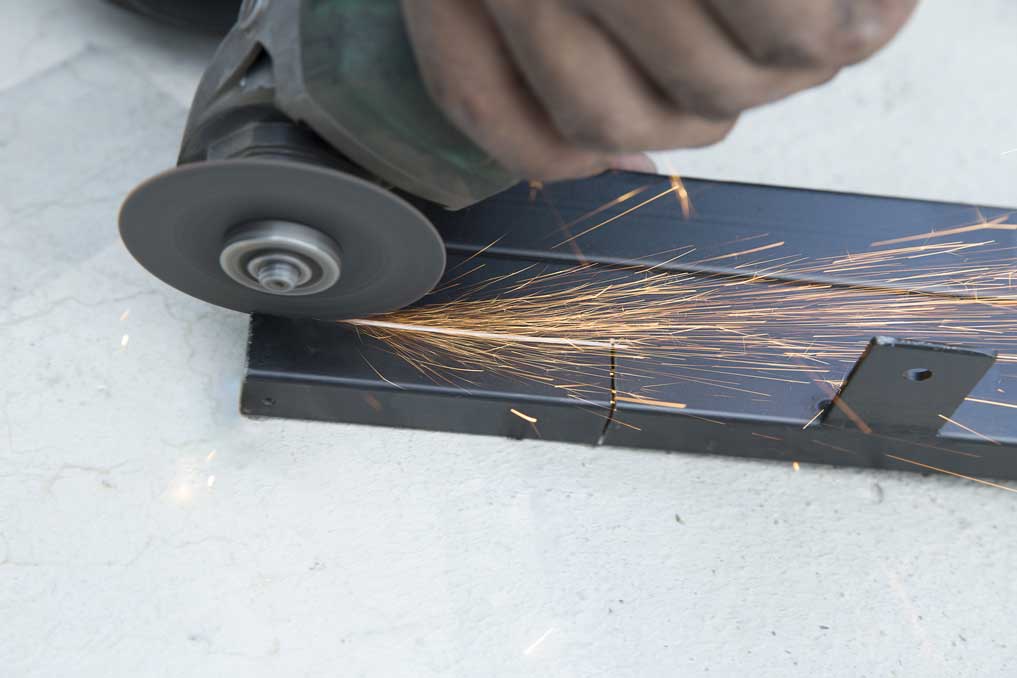Knowing how to properly cut metal panels on-site is a necessary skill for any successful installation of Steel roofing and wall systems. At Westman Steel, we understand the importance of having the right tools and correct methods to ensure your panels remain damage-free. Using the wrong tools or techniques can lead to rust, unsightly rust stains, premature deterioration, and even the voiding of your warranty, which is something no one wants, especially with our challenging Canadian climate.

How to Cut Metal Panels for Your Canadian Project:

Safety Precautions: Your Top Priority
Before you even pick up a cutting tool, it’s paramount to take appropriate safety precautions to avoid injury. Steel panels have sharp edges, and cutting processes create airborne debris.
Gloves: Always wear sturdy work gloves to protect your hands from cuts and scrapes caused by sharp metal edges.
Eye Protection: Put on safety goggles or a face shield to protect your eyes from flying metal filings and debris.
Debris Management: If Steel filings fall onto the surface of your metal panel, use compressed air to blow them off. Never wipe them with your hands or a cloth, as hot filings can embed in the coating and lead to rust.

Tools to Use for Cutting Westman Steel Panels
To avoid damaging the protective coatings on your Westman Steel panels, it is crucial to use the proper tools. Generally, snips are recommended for precision trim work, while shears and nibblers are the preferred tools for cutting the main panels themselves. Here’s a look at some of the best options for cutting metal panels:
Aviation Snips: These are an excellent choice for making small, precise cuts, especially for detailed trim work or cuts around penetrations like pipes or vents. They offer good control for intricate shapes.
Electric Shears: Optimal for making longer, straight cuts along the length of the steel, such as cutting a wall panel to fit a corner, around a door opening, or for lengthwise reductions. Electric shears create a clean cut with minimal heat.
Mechanical Shears: Often an add-on tool that fits into an impact driver or screw gun. Mechanical shears are an excellent choice for making bevel cuts on standing-seam panels, particularly at complex roof areas like hips and valleys. They offer precision and speed for these specific applications.
Nibblers (Turbo Shears): Ideal for cutting openings for windows, doors, or other irregular shapes in metal panels. Nibblers remove small pieces of metal at a time, resulting in a clean edge without heat distortion.
Steel Circular Saw (saw and blade made for cutting steel): Can be used if other specialized tools are not available, but only with a blade specifically designed for cutting metal panels. These blades are typically made of carbide-tipped steel and are designed to cut cleanly without excessive heat. This ensures that any hot metal filings generated during the cut fall away from the visible, coated surface, preventing them from embedding and causing future rust spots or damage to the paint finish.

Tools to Avoid When Cutting Metal Panels
Using the wrong tools is one of the most common causes of panel damage and warranty issues. Absolutely avoid these tools when working with metal panels:
- Torches
- Cut-off Saws (Abrasive Blade Saws)
- Reciprocating Saws
- Hacksaws
- Grinders
Why avoid them? All these tools generate excessive heat and friction. This heat will melt or burn the Galvalume or Galvanized coating (a protective zinc-aluminum alloy applied to our steel panels for corrosion resistance), causing immediate edge rust. They also throw a significant amount of hot steel debris onto the panels. This debris will be incredibly hot, and if it lands on the panel’s coated surface, it will embed into the paint finish. Over time, this embedded debris will rust, leading to unsightly rust spots and potentially more severe problems down the road, compromising the panel’s lifespan and potentially voiding your Westman Steel warranty.
Conclusion: In conclusion, knowing how to properly cut your metal panels on-site and having the right tools are essential steps for a successful installation. Following Westman Steel’s recommendations for cutting metal will help ensure that your panels remain damage-free, preserving their aesthetic appeal and long-term performance against the Canadian elements. Using the wrong tools can result in rust, rust stains, and the voiding of warranties, so it is critical to choose correctly and prioritize careful technique.

About Westman Steel
Westman Steel is a proud Canadian manufacturer and the premier provider of high-quality metal panels and steel building components for the construction industry across the country. With strong local presence and manufacturing facilities in British Columbia (Langley), Alberta (Airdrie, Edmonton), Saskatchewan (Swift Current, Saskatoon, Regina), Manitoba (Brandon, Winnipeg), and Ontario (Cambridge), Nova Scotia (Dartmouth) and Newfoundland Westman Steel partners with architectural specifiers, commercial construction professionals, and homeowners to create high-performance, sustainable, and inspirational design solutions.
Our dedicated team, with deep knowledge of Canadian building codes and climate demands, provides the expertise to address today’s challenges in high-performance, sustainable, and Net-Zero building. Westman Steel delivers outstanding roof, wall, and fascia metal panels, along with comprehensive trim and accessory packages, from our strategically located facilities throughout Canada.
For more information, visit the Westman Steel website, or to find the nearest branch near you, please visit our Locations page.